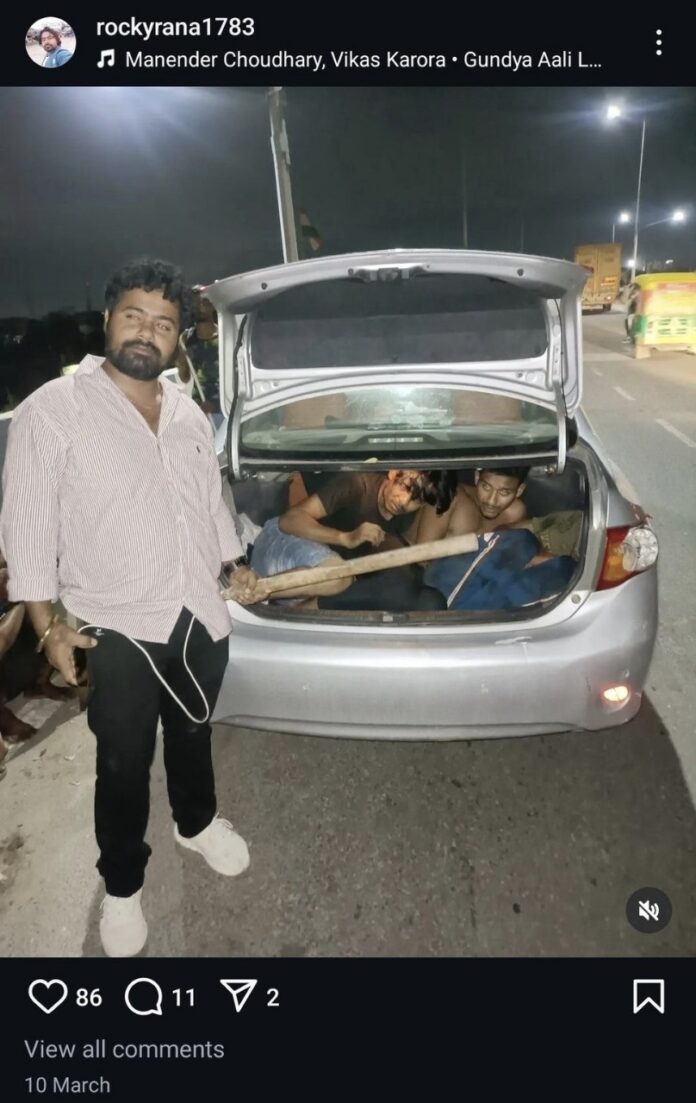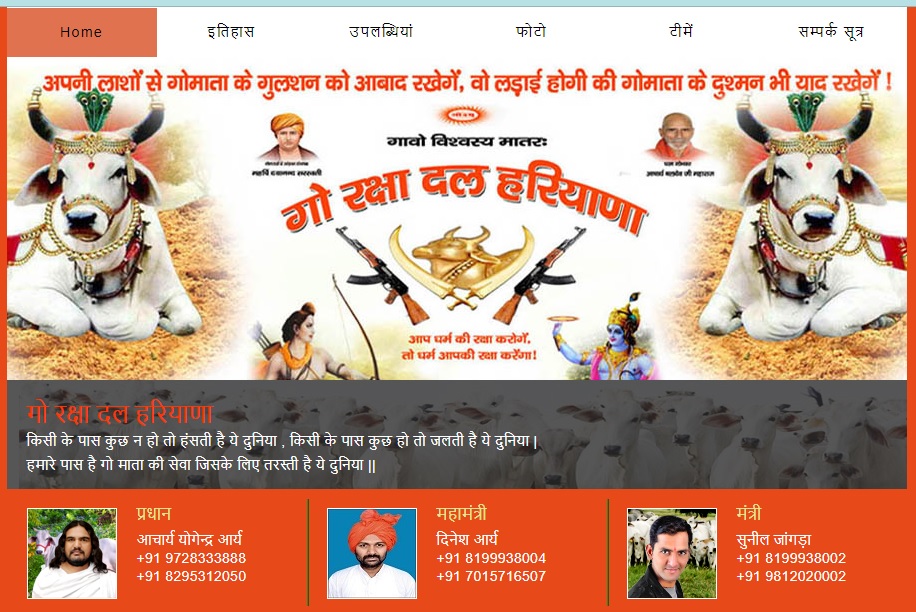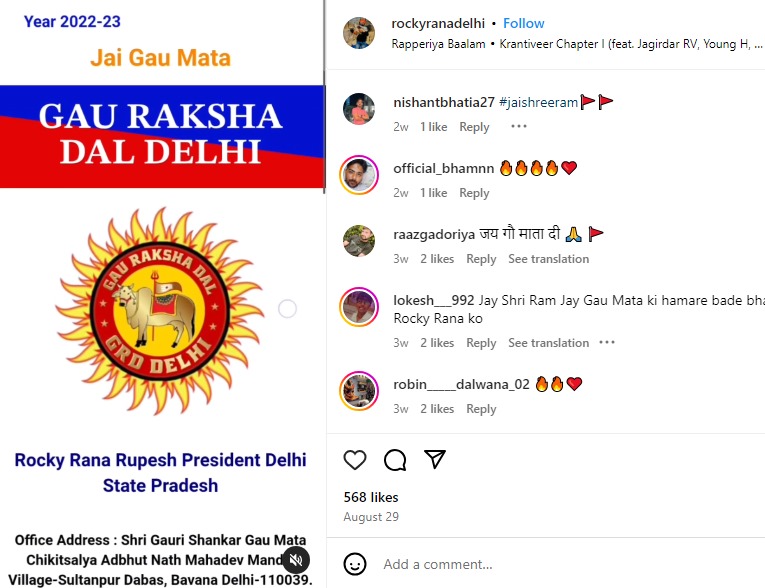
By Anwarulhaq Baig
NEW DELHI: A troubling surge in cow vigilantism is casting a dark shadow over India’s capital and neighboring regions, with rising incidents of violence primarily targeting Muslims. Activists and media reports are sounding alarms over the unchecked rise of extremist groups, operating under the guise of Gau Raksha Dals, on the pretext of protecting cattle.
Surge in Cow Vigilantism
Civil rights organizations and opposition leaders have raised alarms about a disturbing trend of violence linked to cow vigilante groups in India. Reports indicate that at least 55 individuals have died in approximately 50 incidents involving these groups during Prime Minister Narendra Modi’s term. A 2019 Human Rights Watch report documented 44 deaths between 2015 and 2018. Concerns are escalating, particularly as more than a dozen attacks have been documented in just the first 100 days of Modi’s third term.
“There have been waves of cow vigilantism throughout all three terms of Modi’s government, but the initial months of Modi 3.0 have seen a particularly sharp resurgence of such violence,” noted Muhammad Akram, a policy researcher studying the issue.
This trend has been exacerbated by discriminatory legislation and communal violence, especially in election-bound states like Maharashtra and Haryana. Armed gangs patrol highways at night, claiming to protect cattle, often targeting Muslims suspected of transporting beef or cows for slaughter. Reports suggest these vigilantes can be bribed to allow safe passage for cattle transporters, indicating a network operating with political backing from the ruling BJP.
Gau Rakshak Dals: A Pattern of Violence
A disturbing pattern of vigilante justice has emerged across the Delhi National Capital Region (NCR) and neighboring states. On August 8, in Sonia Vihar, Delhi, self-proclaimed cow vigilantes apprehended three Muslim men transporting meat, claiming it was cow meat. The men were tortured and later arrested by police, while the vigilantes faced no charges. A video posted on social media showed the group’s leader, Rupesh Rana, assaulting one of the men in front of police officers, who did not intervene.

This incident reflects a broader climate of impunity for cow vigilante groups. On September 15, a fact-finding team found a palpable atmosphere of fear in Hansawas Khurd, Haryana, following the lynching of 24-year-old Sabeer Mallik, a migrant from West Bengal, who was killed by far-right vigilantes accused of carrying beef. After the incident, all migrant Muslim families reportedly fled the area.
In February 2023, the charred remains of two Muslim men from Rajasthan were discovered in a burnt SUV in Haryana, with their families accusing prominent cow vigilante groups of involvement. Another tragedy occurred when Aryan Mishra, a Class XII student, was mistakenly identified as a Muslim cattle smuggler and shot dead by cow vigilantes in Haryana. The accused told the police he did not know that Mishra driving a car was a Brahmin, not a Muslim. This indicates that the cow vigilantes have the authority to kill a Muslim on the pretext that he carried beef or transported cows for slaughter. Cow vigilantes have the law in their own hands with police and law order agencies doing nothing against their open violence against Muslims
The Rise of Digital Cow Vigilantism
Social media plays a significant role in amplifying cow vigilantism. Platforms like Facebook and YouTube have become breeding grounds for extremist ideology, allowing groups to gain followers and spread their message. Investigative journalist Ashish Khetan highlighted the tragic killing of Aryan Mishra as emblematic of the failures of Indian law enforcement and the rise of cow vigilantism.
Cow vigilante leaders like Anil Kaushik and Monu Manesar have leveraged social media to glorify their illegal activities, instilling fear among Muslims. Kaushik has a significant following and showcases dramatic confrontations online, while Manesar uses his platform to amplify his influence, boasting over 200,000 subscribers on YouTube. Rupesh Rana also shares violent videos, showing a troubling normalization of such acts.

Experts suggest that these broadcasts not only intimidate minorities but also inspire copycat actions among other vigilante groups. Khetan notes, “The impunity with which cow vigilantes operate is indicative of a broader systemic collapse,” exacerbated by social media’s role in spreading hate and violence.
Public Outcry and Reactions
Reactions from political leaders and activists have intensified. Meenakshi Ganguly from Human Rights Watch noted the alarming nature of recent abuses linked to unfounded claims of beef consumption. Prashant Bhushan, a prominent lawyer, criticized the state’s failure to protect minorities, linking cow vigilantes to the broader pattern of violence against Muslims.
Saket Gokhale, a Member of Parliament, condemned the violence in the capital, questioning the effectiveness of local governance. Karthik Srinivasan termed the situation “cow vigilante terrorism,” while Gargi Rawat highlighted the inaction of police during violent incidents.
Kenneth Roth, former executive director of Human Rights Watch, connected the rise in cow vigilante violence to political patronage from the BJP, which often targets Muslims involved in cattle trading. Gaurav Sabnis called for a change in terminology, stating that labeling these groups as “vigilantes” diminishes the severity of their actions.
Despite a 2018 Supreme Court directive aimed at curbing cow vigilantism, including the appointment of nodal police officers and prompt action against vigilantes, enforcement has been inconsistent. Some political parties have been accused of tacitly supporting these groups to consolidate their Hindu voter base.
The issue of cow vigilantism has drawn international concern, with human rights organizations highlighting the targeting of minority communities. The U.S. State Department’s annual report on international religious freedom has also addressed the rise in cow vigilantism as a significant concern for religious minorities in India.
As cow vigilantism continues to escalate, the need for accountability and protection for vulnerable communities has never been more urgent.




